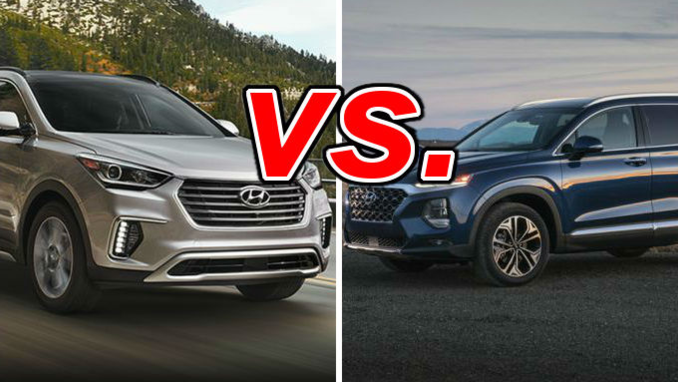When it comes to SUVs, Hyundai has made a significant mark in the automotive world, showcasing vehicles that blend practicality with contemporary aesthetics. Among its lineup, the Hyundai Santa Fe and Santa Fe Sport stand out. At first glance, these two models may seem similar, almost like siblings wearing matching outfits. However, delve deeper and you’ll discover distinct characteristics that set them apart. So, what exactly is the difference between the two? This playful yet challenging question invites us to explore the nuances that could influence your next automotive purchase.
Understanding the Basics
The Santa Fe model, with its robust design and ample space, leans towards being a more family-friendly option. In contrast, the Santa Fe Sport—a moniker that has changed over the years—caters to those who prioritize agility, sportiness, and a more compact feel. When contemplating which SUV is right for you, it’s essential to assess what features resonate with your lifestyle. The challenge is deciding which attributes are more appealing: the spacious family-centric nature of the Santa Fe or the dynamic flair of the Santa Fe Sport.
Dimensions and Capacity
Should we start with the dimensions? The Hyundai Santa Fe is larger, often perceived as more spacious. With ample cargo room, it becomes a prime candidate for family vacations, weekend getaways, or simply a trip to the grocery store with the kids. It has a third-row option, which adds the possibility of transporting up to seven passengers—a boon for larger families or those who enjoy social outings.
Conversely, the Santa Fe Sport is more compact, designed for urban maneuverability without sacrificing functionality. The two-row SUV mirrors a more athletic silhouette, appealing to singles or smaller families who appreciate a sportier drive. For city dwellers, parking in tight spaces becomes less of a Herculean task.
Performance and Handling
Now, let’s pivot to performance. If you’re someone who revels in the thrill of driving, you’ll want to consider powertrains closely. The Santa Fe typically offers a robust V6 engine, ensuring a smooth and powerful ride. Its larger frame allows for a seamless experience on highways and in various terrains, making long drives feel like a breeze.
In contrast, the Santa Fe Sport features a turbocharged option that lends itself to a more vigorous, energetic driving experience. It feels agile, reacting to curves and turns with effortless precision. For those who appreciate spirited drives and quick responses, the Sport’s tuned handling might resonate better. Herein lies the challenge: do you prefer a steady, powerful drive or a zippy, sporty ride? Your choice could significantly influence your daily driving experience.
Technology and Features
Let’s not forget about technology. Hyundai tends to stay ahead of the curve, equipping both models with advanced features that cater to modern-day needs. The Santa Fe, leaning towards a luxury feel, often boasts high-end finishes, user-friendly infotainment systems, and a host of safety features—an ideal pairing for families concerned about security.
The Santa Fe Sport, while still technologically advanced, focuses more on integrating innovative features that enhance the driving experience. Features like Apple CarPlay and Android Auto come standard, making tech-savvy users feel at home. One must consider: is the emphasis on luxury accommodations more appealing, or does the allure of cutting-edge tech play a more significant role in your lifestyle?
Fuel Efficiency
Fuel efficiency is another striking differentiator. While the Santa Fe might offer the power of a V6, it may come at the expense of fuel economy. Its larger engine consumes more fuel, making it a less ideal option for economy-minded drivers. The Santa Fe Sport, with its smaller turbocharged engine, typically delivers better mileage. This could be a pivotal factor for those who frequently commute or take long-distance trips. The question remains: how often do you travel, and how much do fuel costs factor into your decision-making process?
Price Point
Lastly, there’s the matter of cost. Typically, the Santa Fe comes with a higher price tag, owing to its size and additional features. Buyers investing in a Santa Fe are often looking for more than just a vehicle; they’re investing in spaciousness and additional functionalities that cater to a modern family’s lifestyle. On the other hand, the Santa Fe Sport presents itself as the more wallet-friendly option, appealing to those seeking a practical yet stylish SUV with sporty characteristics.
Final Thoughts
In graphically delineating the distinctions between the Hyundai Santa Fe and Santa Fe Sport, we are left with poignant inquiries regarding our preferences and needs. Are you a family seeking spacious comforts, or a solo adventurer cherishing compact agility? The SUV showdown invites you to reflect: which vehicle aligns with your aspirations and lifestyle? Perhaps the best approach is to test drive both models, allowing them to unveil their unique characteristics in real-time. Ultimately, your decision should harmonize with your expectations, driving habits, and of course, that innate desire for something remarkable on four wheels.
